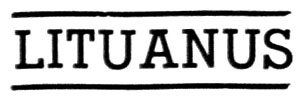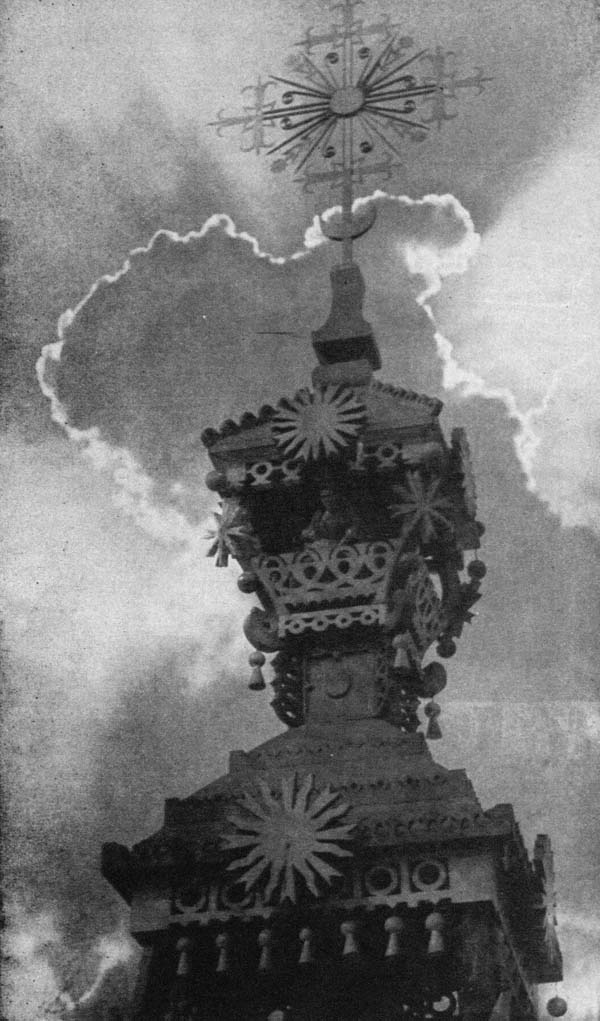
Editor of this issue: L. Sabaliūnas
 |
www.lituanus.org |
|
Copyright
© 1956 Lithuanian
Student Association, Inc.
No.
2(7)
- June 1956
Editor of this issue: L. Sabaliūnas |
|
Book Review
A BOOK CALLED LITHUANIA
"LITHUANIA," by Vytautas Augustinas, published by Ateitis, 120 pp. $6.00.
 |
| Cross and Chapels, from the book "Lithuania". |
They are all similar on the outside. You have to open them to find out if they are books to be learned from or books to be leafed through casually, books to wile away the time or books to make you think. Some books, however, provide food for thought for the serious, entertainment for the pleasure loving, information for the curious and a story for the dreamers. Those are books which are written in the international language of photographs.
Now this country is really strange — it has presently no place on the map, it has no king, dictator or president of its own, as such it is nonexistent. But once it was bustling with life and it was at that time that Mr. Vytautas Augustinas took 4000 photographs, using 125 to compose a book to which he gave the name of the country — Lithuania.
Lithuania was photographed by one of her best photographers, a man who knew his country well and loved it. This is Mr. V. Augustinas' second edition (1955; first edition 1951), improved and enlarged (125 photographs, 120 pp.). It features English captions and some concise but well presented remarks about Lithuania's landscape, architecture, education, history. Statistics on the economic situation of pre-Iron Curtain Lithuania as compared with that of the Soviet Union, the United States and other countries, and a short glance at the cosmopolitan and the individualistic traits of the country give the English speaking reader some understanding of a way of life which was lived by only about three million people. Not many foreigners had the inside story. Lithuania gives a good glimpse of this story to our friends.
Each page develops a little more this tale of a happy country which boasted of Kaunas — modern in its elegant, straight-lined buildings and its rapid progress; Vilnius, the capital — old and romantic with its churches and winding streets, its castle tower and the hill of the three white crosses; new manufacturing plants, numbers of educational, business, government buildings and litanies of old wooden churches and belfries resembling Chinese pagodas; sports stadiums and old markets, ballet and folk dances, wandering sand dunes and man-made caste-hills, and a winged statue of liberty with a flag in the uplifted hand.
Every photograph not only presents a picture tut also suggests a story which the imagination readily supplies. It is the story of a little country on the shores of the Ealtic Sea which now lives its free and happy life only in photographs. It is a country which is alive and yet has no place on the map, neither has it a dictator, king or president of its own, as a country it is nonexistent. It is a strange country which a photographer has captured in a book called Lithuania.